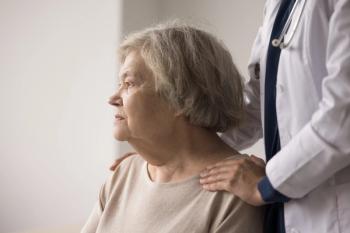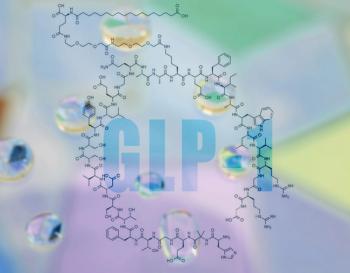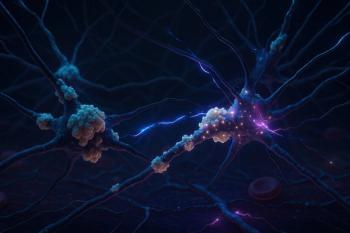
Impact of Gut Microbiome on Reward Pathways and Alcohol Use Disorder: Insights From Investigators
Key Takeaways
- Candida albicans colonization in mice affects ethanol consumption and dopamine receptor expression, leading to alcohol aversion.
- Prostaglandin E2 signaling plays a crucial role in the impact of C. albicans on drinking behavior.
New research reveals how Candida albicans in the gut microbiome influences alcohol consumption and aversion, offering insights for treating alcohol use disorder.
CLINICAL CONVERSATIONS
Researchers Carol Kumamoto, PhD, and Andrew Day, PhD, shared insights with Psychiatric Times about their new study on the connection of the gut microbiome, the brain’s reward pathways, and alcohol use disorder. Their paper found a connection between the fungus Candida albicans and alcohol use disorder via gut microbiome modulation of the dopamine reward pathway. Presence of C. albicans was found to alter enjoyment of alcohol in mice, with higher prostaglandin E2 levels leading to aversion to alcohol. Kumamoto and Day’s research offers potential for creative new approaches to treating alcohol use disorder.
Psychiatric Times: What interested you in this topic, and why did you want to research it further?
Authors: We had previously shown that Candida albicans colonization affects host molecules called endocannabinoids and can cause an anxiety-like phenotype in mice. This made us very interested in the gut-brain axis. Over the past decade, a group led by Bernd Schnabl, MD, at University of California, San Diego, demonstrated that Candida albicans shows an increased abundance in fecal samples from individuals with alcohol use disorder (AUD) and can contribute to alcoholic liver disease. We started to wonder about the effects that C. albicans has on individuals with AUD and on other organ systems such as the brain.
PT: Can you review the study and summarize the data and results from your recent paper?
Authors: In this study, we conducted a short-term colonization experiment with Candida albicans in mice and assessed whether colonization with the fungus impacted ethanol consumption and physiological responses to ethanol administration. Mice that were colonized with C. albicans consumed less alcohol than mice that were not colonized with C. albicans (mock-colonized). Antagonism of receptors for the molecule prostaglandin E2 (PGE2) reversed the effect of colonization showing that PGE2 signaling plays a key role in the effect of colonization on drinking behavior. Furthermore, colonized mice had alterations in the expression of dopamine receptors in the dorsal striatum of their brains, indicative of an altered relationship with alcohol. C. albicans-colonized mice appeared to develop an aversion to alcohol rapidly. We found that C. albicans-colonized mice showed greater effects of ethanol intoxication when given the same amount of alcohol as mock-colonized mice, and these effects could contribute to the development of aversion to ethanol. These results establish the fungal microbiome and certain eicosanoids like PGE2 as players in the gut-brain axis in ethanol consumption.
PT: Do these findings fill a gap in research about causes or influences of alcohol use disorder?
Authors: Our results contribute to the growing body of knowledge that the gut microbiome can contribute to crucial phenotypes that drive AUD, such as ethanol preference and physiological responses to alcohol ingestion. They also establish gut fungi as players in the gut-brain axis in AUD. These findings help us gain a more comprehensive understanding of contributors to AUD.
PT: Was there anything in the study that surprised you, or a particularly interesting aspect?
Authors: It was surprising that when C. albicans was introduced into mice, their drinking behavior was altered very quickly, within 24 hours. We saw a similar rapid effect of colonization when studying the ability of C. albicans colonization to change murine anxiety-like behavior. It seems that whatever C. albicans is doing, it happens quickly. We also did not expect to see that colonization changed the way alcohol affected the host. Colonized mice had greater loss of motor control when given a standard dose of alcohol in comparison to non-colonized mice, showing that the body was more strongly affected by alcohol when C. albicans was present.
PT: How do you see this discovery about microbiome and the reward center potentially impacting future treatment for alcohol use disorder?
Authors: Our research focused specifically on the effects of a fungal colonizer, C. albicans. Consistent with our findings, previous studies showed gut microbiome impacts on dopamine signaling in the context of substance use disorders (SUDs) for cocaine, alcohol, and other drugs of abuse. Future treatment of SUDs might consider the effects of the microbiome as it pertains to the ability to adhere to abstinence. For example, Dr. Jasmohan Bajaj’s group at VCU has shown that fecal microbiota transplant (FMT) in individuals with AUD can lower craving in early recovery.
PT: Are there further investigations of this concept that you hope to see in the future?
Authors: It would be extremely interesting to know how our findings might translate to human patients and whether this work would spark the development of novel therapies for AUD.
PT: Is there other work you find interesting being done with the gut microbiome and psychiatric disorders?
Authors: There is a lot of interesting work in this area. We are particularly fascinated by the work of Jasmohan Bajaj, MD, on FMT for individuals with AUD.
PT: How might this discovery be of interest to psychiatrists working with patients with alcohol use disorder?
Authors: Works like ours reiterate the notion that there are myriad variables that contribute to factors that drive SUD, and it is extremely complex. The more severe the SUD, the more different factors that contribute to craving and negative affect in withdrawal there could be. The daily decision of whether to drink or use substances or not becomes a more difficult or nearly impossible one. This is important to remember during care because inability to maintain sobriety is not a moral failing of the individual nor a failure of care—it may just happen. In this context, it is probably less important to think of C. albicans alone and more important to think about the growing body of work on the microbiome as a whole related to AUD. We think that microbiome-based therapy could be helpful in individuals who have exhausted traditional treatment options for AUD and still cannot maintain sobriety. In the future, treatments such as FMT that target the microbiome could be beneficial for certain patients.
PT: Is there anything else about this research, the field, or additional work you are doing that you want psychiatrists to know?
Authors: It is interesting to think about the link to diet. We know that diet can affect the composition of the microbiome very dramatically, and our results and those of others in the field argue that organisms in the microbiome can affect host behavior.2 These observations raise questions about diet, such as whether natural changes in diet have effects on patients and whether diet could be manipulated as part of a therapeutic approach to disorders.
PT: Thank you!
Dr Kumamoto is a professor of molecular biology and microbiology at Tufts University.
Dr Day performed this work as a PhD candidate in molecular microbiology, working with Dr Kumamoto.
References
1. Day AW, Hayes E, Perez-Lozada J, et al.
2. Hartmann P, Lang S, Zeng S, et al.
Newsletter
Receive trusted psychiatric news, expert analysis, and clinical insights — subscribe today to support your practice and your patients.














